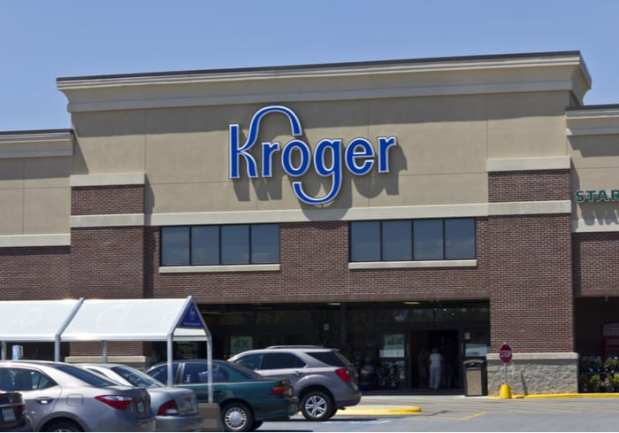Kroger’s Private-Label Grocery War Advantage?

To compete in the grocery wars and gain market share from competitors such as Aldi, Amazon and Walmart, supermarkets are bolstering their private-label efforts. One of Kroger’s most powerful competitive advantages is the company’s own brand products, Chairman and Chief Executive Officer Rodney McMullen said in the company’s first-quarter 2019 earnings conference call. And McMullen pointed out that a focus on shifting its mix toward Simple Truth and premium brands such as Private Selection led to double-digit gains of those lines during the quarter. (Even so, the retailer missed Wall Street’s quarterly same-store estimates as it contended with strong competition from Amazon and Walmart.)
McMullen said the company knows that shoppers love their brands “and that they are hungry for innovative new products that they can only get by coming to and shopping with Kroger.” At the same time, the company is bringing new tastes, trends and experiences to its shoppers. During the first quarter, for instance, it introduced 219 our brand items. “Our customer’s favorite new items fall in line with the key food and flavor trends we predicted for 2019,” McMullen said. Those items include the Kroger Deluxe unicorn swirl ice cream. According to reports, Starbucks started the unicorn craze through a Unicorn Frappuccino in 2017, and Target rolled out its Unicorn Magic ice cream in 2018.
As it stands, nearly half of Kroger’s private-label grocery lines are made in 37 facilities. This arrangement gives it an advantage over the competition by allowing it to expeditiously devise and experiment with products. It is also said that the grocer “makes more in-house” than other U.S. retailers. By comparison, Walmart outsourced the production of its private-label brands before recently opening an Indiana dairy. All the while, skyrocketing freight and commodity costs have squeezed the margins at consumer-packaged goods companies — and made competition harder for them. Brands, too, have to face the reality that families can save thousands a year through purchasing private-label food: On average, these items are roughly 20 percent less costly than branded goods per IRI data.
Omnichannel Retail
Grocers are also beefing up their omnichannel efforts in the grocery war age. Kroger, for instance, is “building a platform to serve customers anything they want, any time they want and anywhere they want,” McMullen said. He pointed out that the company’s “customers don’t distinguish between an in-store and online experience.” Instead, they usually have a food-related need or a problem to solve and want the most seamless solution. Kroger’s shoppers are not alone in their view: The top reason consumers visit a grocery retailer is they want a well-coordinated online and in-store experience, according to the PYMNTS Enterprise Retail Grocery Report.
For Kroger, the company’s digital sales grew 42 percent in the first quarter, and it also increased its coverage area to reach 93 percent of its customers. As a result, that share of consumers who visit a Kroger brick-and-mortar store can also shop with the company through pick-up or delivery. (In February, for instance, Kroger and Ocado announced that Central Florida and the Mid-Atlantic would be the next regions for the grocer’s two newest U.S. customer fulfillment centers.) McMullen said in the call of the company’s multi-channel initiatives, “Our efforts are positioning Kroger to be the leading omnichannel retailer in the food industry.”
